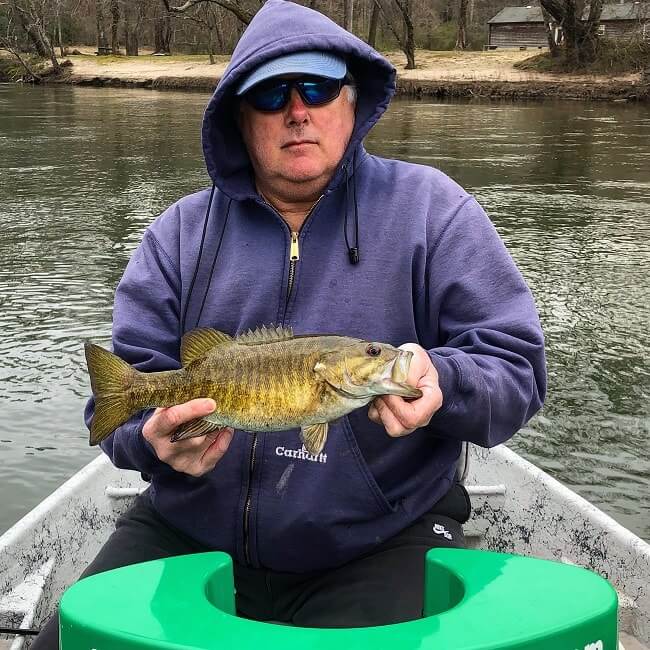 Written by: Ethan Hollifield, Head Guide
Written by: Ethan Hollifield, Head Guide
Arguably the most exciting and fun way to target smallmouth bass in rivers is with topwater flies. There really is nothing more exciting to me than to watch a topwater presentation get pounced on by a big river smallmouth. Throwing topwater flies along with the intricacy that comes with how to fish them and the tackle involved can encompass an entire book in and of itself. In this article, I’ll highlight a few of what I see are the most critical components to topwater fly fishing for smallmouth.
Fly Fishing Smallmouth Casting Tips
If I had to pick one piece of advice when fishing topwater for smallmouth, it would be that less is always more. Let me present a scenario that I’ve seen as a guide all too often. I’ll have folks in the boat cast flies against the bank into relatively shallow water, and immediately begin chuggin their fly back to the boat as fast, and as loud as possible. Normally when this happens, especially in shallow water, I’ll see wakes of all the spooked smallmouth as they start darting off in every direction. Much of this comes from the loud unnatural commotion that is created by the fly itself. The proper technique to topwater smallmouth fishing is to let the fly land as softly as needed, and let it sit for as long as possible. We often call this “stewing” the fly. Wait until at least the rings have settled from around the fly before imparting action on it again. The reason why I think this works so well is that in shallow water vibrations are reflected from the surface of the water to the bottom repeatedly at a faster rate than say, deep water. Too much commotion spooks fish, while the enticing gentle pops and movements of a topwater fly presented very quietly around shallow cover can prove to be very enticing, especially since I believe this also imitates large terrestrial insects. The only time I will tell my clients to make erratic pops or movements of their fly is within the following scenarios: I see bait fish being chased towards the bank, off colored water, or when presenting to fish in deeper water where I want more vibration to reverberate to call up a fish.
Types of Topwater Flies
When it comes to topwater flies for smallmouth: I break them down into four different categories: loud flies, quiet fies, baitfish flies, and insect flies. More so, I look into the sound that a topwater fly makes when it hits the water along with what kind of sound will be transmitted through the water column as the fly is retrieved. Every good bass fisherman knows that imparting different sounds, and vibrational frequencies throughout the water will transmit to the bass through their lateral line in different ways.
The sound your popper/ topwater fly makes is one of the most critical aspects to understand when fly fishing for smallmouth. Flies such as a flat faced deer hair popper or flat faced foam popper will impart a louder plop on the water when retrieved, while at the same time also landing on the water the softest. Flies such as the famous Wiggle Minnow or Dahlberg Diver also emit complete different sounds based on their retrieve. Plastic/ shellacked foam flies make the loudest sounds on/ in the water, and also hit the water with a louder plop due to the increased line speed that can be generated on your cast with those flies.
It is worth experimenting throughout the day to see what kind of mood the fish are in and alter techniques accordingly from either aggressive pops to dead drifting poppers like dry flies. Either way, it’s a really exciting way to fish, and arguably the most fun way to catch smallies on the fly.
